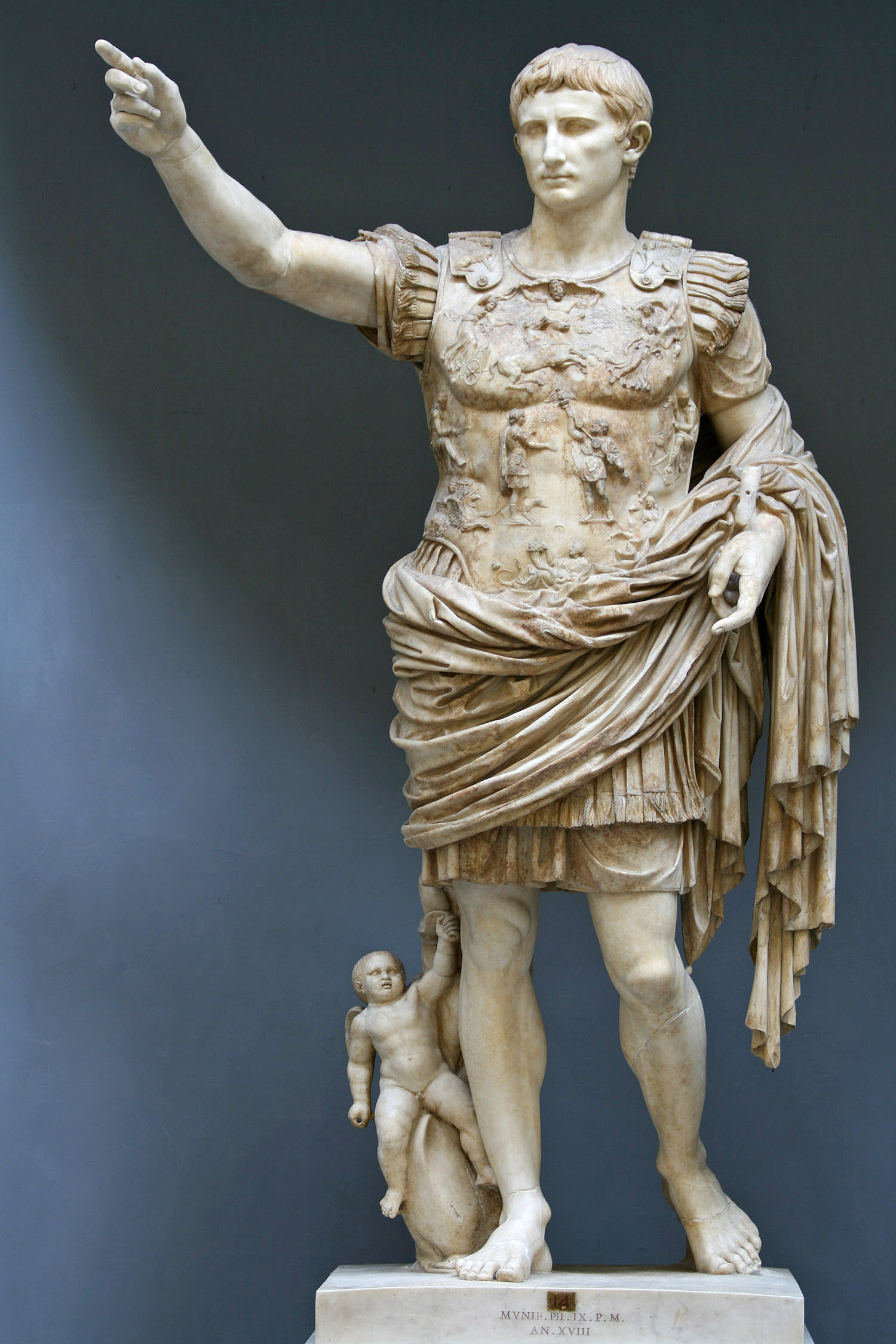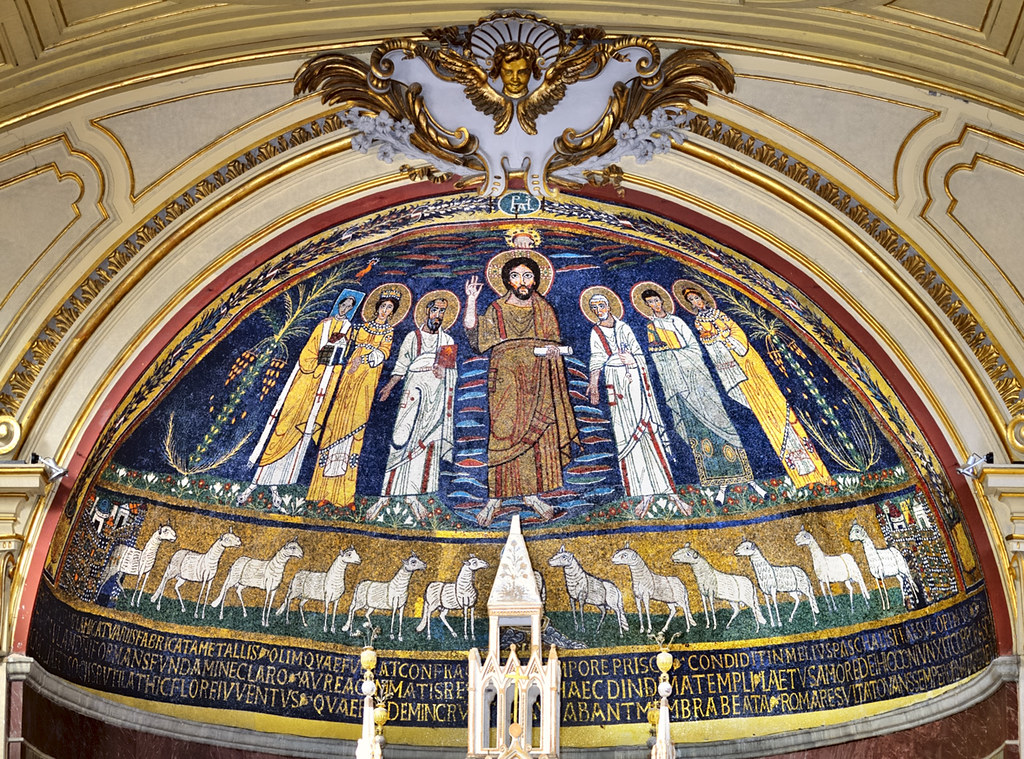I believe that all culture can be described as existing in three phases: archaic, classical, and baroque. You might add primitive and decadent or mannerist to either side to round out the list. In the archaic, the conventions of the style are established; in the classic, they are perfected; and in the baroque, they are elaborated.
There is some confusion with the terminology because we use the words classical and baroque in different senses. In the strictest sense, the word classical refers to the culture of fifth century Athens. Likewise, baroque strictly means the culture of continental Europe in the seventeenth century (you might add a quarter century to either end). Things get confusing because we now use the word classical to mean anything that reminds us of the purity, proportion, and order of fifth century Athens and the word baroque to mean anything exuberant, opulent, and exquisite. For this reason, Greek culture in the period following the fifth century is often described as baroque because of it breaths the same spirit as the art of the seventeenth century, even though historians would call the period 'Hellenistic.' Likewise, the rational harmony of Haydn and Mozart is called 'classical,' even though it follows the historical Baroque period.
I hope that is sufficiently clear! If not, I will allow the following pictures of Greco-Roman statues in the Vatican Museums to make the arguments:
Apollo Belvedere
This is the Apollo Belvedere. According to my friend, the sculptor Andrew Smith, it is the most perfect statue ever made. Apollo, the god of reason, is depicted in a naturalistic contrapasto, but his form is divinely perfect.
Augustus of Prima Porta
Likewise, Augustus of Prima Porta rules the universe in quiet, enlightened grandeur.
Contrast these two examples with Laocoon, one of the largest sculptural groups to survive more or less intact from antiquity. Many consider it to be the finest example of Hellenistic sculpture:
Laocoon
Look at the emotion on the face of Laocoon and his sons. Also see how the sculptor's treatment of Laocoon's torso and the boys' writhing bodies makes us believe that the marble is moving. This is art that makes you feel, not think. You stare, rather than contemplate. There is also a tendency to make what should be repulsive, a father and his sons being devoured by a sea serpent, into an object of great formal beauty. For these reasons, modernity, that is the period from the Enlightenment to the middle of the twentieth century, tended to denigrate the baroque and Hellenistic in favor of the classical.
Happily, in our postmodern milieu, we have discarded all canons of taste and may learn to appreciate the art of all periods without necessarily arguing for one, best style. In my puritanical youth, I professed a love for the austerity of Athenian art and the early medieval Romanesque. Becoming moderate in my old age, I now find myself increasingly interested in the Hellenistic, Gothic, and Baroque.
My good friend Paweł Figurski visited me this week on his way to a wedding in Modena. Paweł was only here for a few days, so he wanted to do as much as possible. I finished up my PIMS program this week and began the Greek course at Santa Croce. Along with Paweł, it has been a very busy week.
One of Paweł's main goals was to visit Galleria Borghese, one of the finest art museums in the world. The gallery is the former Villa Borghese, built by Scipione Cardinal Borgia about a hundred years after the time of his infamous relatives Alexander VI, Lucrezia, and Cesare. Cardinal Borgia was the patron of Caravaggio and Bernini, arguably the greatest painter and sculptor, respectively, of the Baroque. The Galleria Borghese contains many of their masterpieces and was in fact constructed specifically to house them.
There is probably no better place for the Baroque in Rome than Galleria Borghese. Baroque is about juxtaposition, not just contrast. In music, this manifests itself in the terraced dynamics of Vivaldi's Four Seasons. In painting, we see "chiaroscuro," the term used to describe the characteristic interplay between darkness and light. In sculpture, hard stone is made into supple flesh and soft cushions. Some art historians credit Caravaggio with singlehandedly inventing the baroque. I read somewhere that he put the "oscuro" in "chiaroscuro." His painting is certainly dark:
Notice also that none of his subjects are 'heroic' in the classical sense. They are fragile and almost commonplace. But the artist shows us that even the commonplace is beautiful and beguiling.
The first painting is of St. Jerome, patron of Latinists. The saint, working on his translation of the Bible, radiates light into a world filled with darkness. His body is thin and weak, worn out by decades of ascetic denial and scholarly lucubrations. The skull on his desk reminds him that death awaits him. Every moment is precious, and he will have to make an account on the last day.
In the second painting, we see the childhood of Christ. He is depicted as an oversize toddler rather than the usual infant. In a novel application of typology, Caravaggio has given a visual interpretation of Genesis and Isaiah as the Woman crushes the head of the serpent and the Son of Man tramples him underfoot. The New Adam and the New Eve cooperate to return the world to the kingdom of God, reversing the sin of our first parents.
The last painting gives us a particularly boyish David, holding up the monstrously huge and still bleeding head of Goliath. The head is actually Caravaggio's. Many believe that the model for David is the young Caravaggio. The interpretation is that sins committed by youth haunt and continually slay the adult. There are many more speculations that I could report on Caravaggio, but I do not want to jump into any rabbit holes. You can find an endless variety of unfalsifiable interpretations of his work on the internet or in your nearest library. I think what is important is that Caravaggio perfected the art of provoking fascination.
We will take our leave of Caravaggio for now. Next time, we will look at how Bernini turned stone into flesh and revolutionized sculpture.




.jpg)







